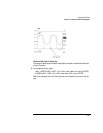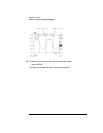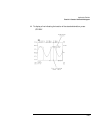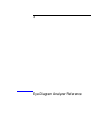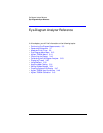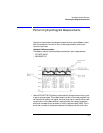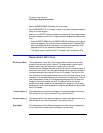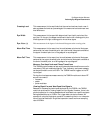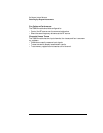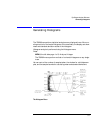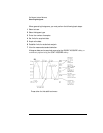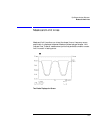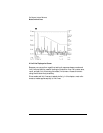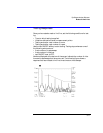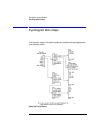
3-5
Eye-Diagram Analyzer Reference
Performing Eye-Diagram Measurements
Crossing Level This measurement is the amplitude that the one level and zero level cross. It
also expresses the level as a percentage of the mean one level and mean zero
level difference.
Eye Width This measurement is the eye width determined from the bit period and the
eye jitter. On the eye, the edges are defined to be the left crossing point plus-
three sigma and the right crossing point minus-three sigma.
Eye Jitter (σ) This measurement is the sigma of a horizontal histogram at the crossing point.
Mean Rise Time This measurement is the mean time interval between a horizontal histogram
centered at the lower threshold point and a horizontal histogram centered at
the upper threshold point on a rising edge of an eye-diagram.
Mean Fall Time This measurement is the mean time interval between a horizontal histogram
centered at the upper threshold point and a horizontal histogram centered at
the lower threshold point on a falling edge of an eye-diagram.
Measure Fast Amplitude and Phase Transitions
The 70820A module measures fast amplitude and phase transitions on contin-
uous wave (CW) and modulated signals. Time, frequency, and power sweeps
can be performed from dc to 40 GHz. The 70820A module triggers on the RF
input signal.
During stimulus/response measurements, the 70820A module controls an RF
source instrument’s:
• frequency
• power
• pulse modulator
Viewing Repetitive and Non-Repetitive Signals
Because of the sampling techniques employed by the 70820A, the 70820A
module is optimized for viewing repetitive input signals. However, there is sin-
gle-shot operation for viewing baseband and modulated non-repetitive signals
having bandwidths up to 10 MHz. Pre-trigger data can also be viewed. An
example of using the single shot operation is measuring the turn-on character-
istics of a pulse modulator. Single shot operation uses a maximum sampling
rate of 20 MHz.



